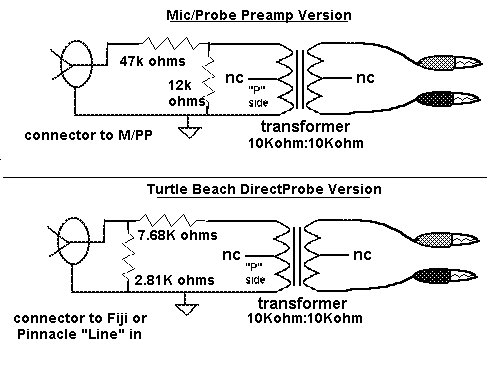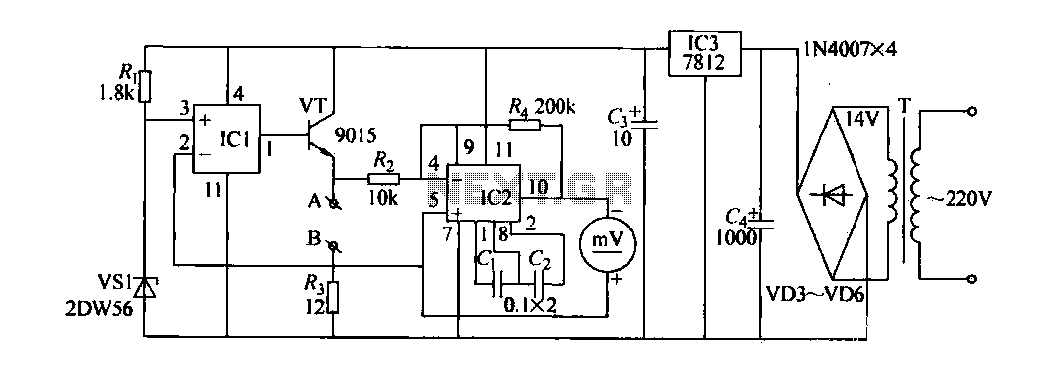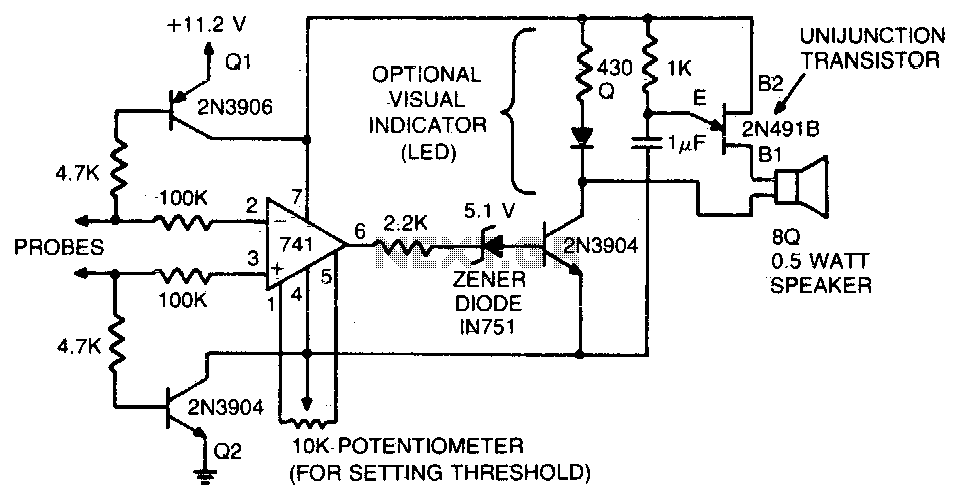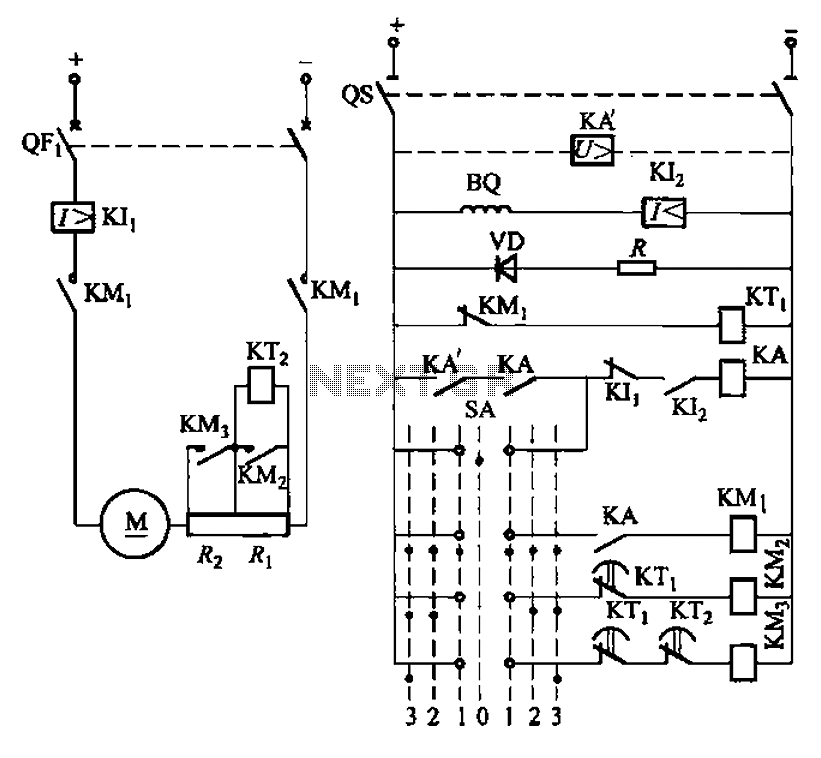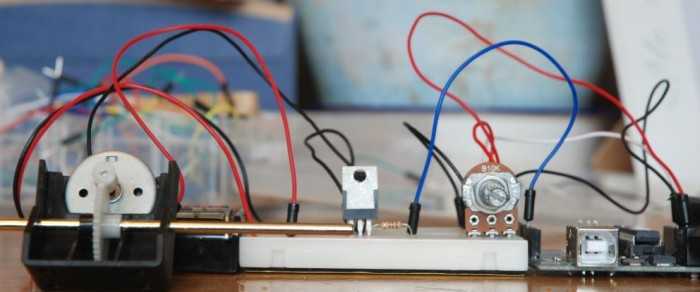
potentiometer Making an adjustable resistance
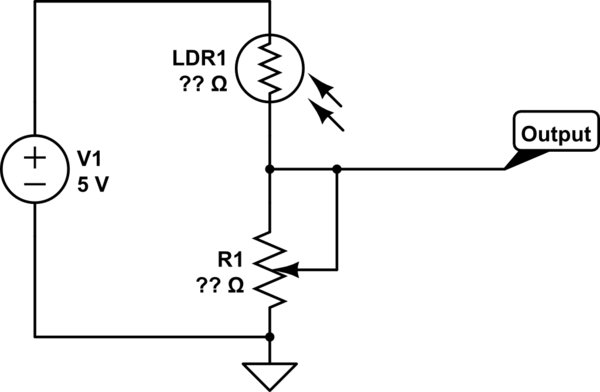
This part of the circuit is isolated from any other component, except for the 5V and ground connections. It includes LEDs and a shift register, which may not interact significantly. The LDR (Light Dependent Resistor) is utilized solely as a light sensor. The purpose of the LDR is to sense ambient light levels. Questions arise regarding whether the light level applied to the LDR is altered using an LED to create a voltage-controlled resistor, or if it merely serves as a decorative element in the schematic.
The circuit under discussion features a Light Dependent Resistor (LDR), which is a crucial component for sensing light levels in various applications. The LDR's resistance decreases as the light intensity increases, allowing it to effectively measure ambient light conditions. In this specific circuit, the LDR is connected to a microcontroller or a shift register, which processes the analog signal received from the LDR.
The shift register serves as an interface to convert the analog signal from the LDR into a digital format that can be understood by the microcontroller. This conversion is essential for further processing and decision-making based on the light levels detected by the LDR. The inclusion of LEDs in the circuit may serve as indicators to visually represent the state of the LDR or the output of the shift register, providing feedback to the user.
The isolation of this circuit from other components, aside from the power supply (5V and ground), ensures that it operates independently, minimizing interference from other parts of the system. This design choice is particularly beneficial in applications where precise light measurement is critical, such as in automatic lighting systems or ambient light sensors in smart devices.
In summary, the LDR's primary role is to monitor ambient light levels, while the shift register and LEDs enhance the circuit's functionality by enabling digital processing and visual feedback, respectively. The overall design emphasizes clarity and effectiveness in light sensing applications, ensuring reliable operation within the specified parameters.Actually this part of the circuit is isolated from any other component (except via 5v & ground). Other than that, you can find LEDs and a shift register, but I guess they do not interact much. Or do they The ldr is used only as a light sensor. is there more to it Antoine_935 Apr 26 `13 at 23:28 I mean, what is the LDR`s purpose Are you se nsing ambient light level Are you changing the light level applied to the LDR with an LED to get a voltage-controlled resistor Is it just there to decorate the diagram XMPPwocky Apr 26 `13 at 23:30 🔗 External reference
The circuit under discussion features a Light Dependent Resistor (LDR), which is a crucial component for sensing light levels in various applications. The LDR's resistance decreases as the light intensity increases, allowing it to effectively measure ambient light conditions. In this specific circuit, the LDR is connected to a microcontroller or a shift register, which processes the analog signal received from the LDR.
The shift register serves as an interface to convert the analog signal from the LDR into a digital format that can be understood by the microcontroller. This conversion is essential for further processing and decision-making based on the light levels detected by the LDR. The inclusion of LEDs in the circuit may serve as indicators to visually represent the state of the LDR or the output of the shift register, providing feedback to the user.
The isolation of this circuit from other components, aside from the power supply (5V and ground), ensures that it operates independently, minimizing interference from other parts of the system. This design choice is particularly beneficial in applications where precise light measurement is critical, such as in automatic lighting systems or ambient light sensors in smart devices.
In summary, the LDR's primary role is to monitor ambient light levels, while the shift register and LEDs enhance the circuit's functionality by enabling digital processing and visual feedback, respectively. The overall design emphasizes clarity and effectiveness in light sensing applications, ensuring reliable operation within the specified parameters.Actually this part of the circuit is isolated from any other component (except via 5v & ground). Other than that, you can find LEDs and a shift register, but I guess they do not interact much. Or do they The ldr is used only as a light sensor. is there more to it Antoine_935 Apr 26 `13 at 23:28 I mean, what is the LDR`s purpose Are you se nsing ambient light level Are you changing the light level applied to the LDR with an LED to get a voltage-controlled resistor Is it just there to decorate the diagram XMPPwocky Apr 26 `13 at 23:30 🔗 External reference

